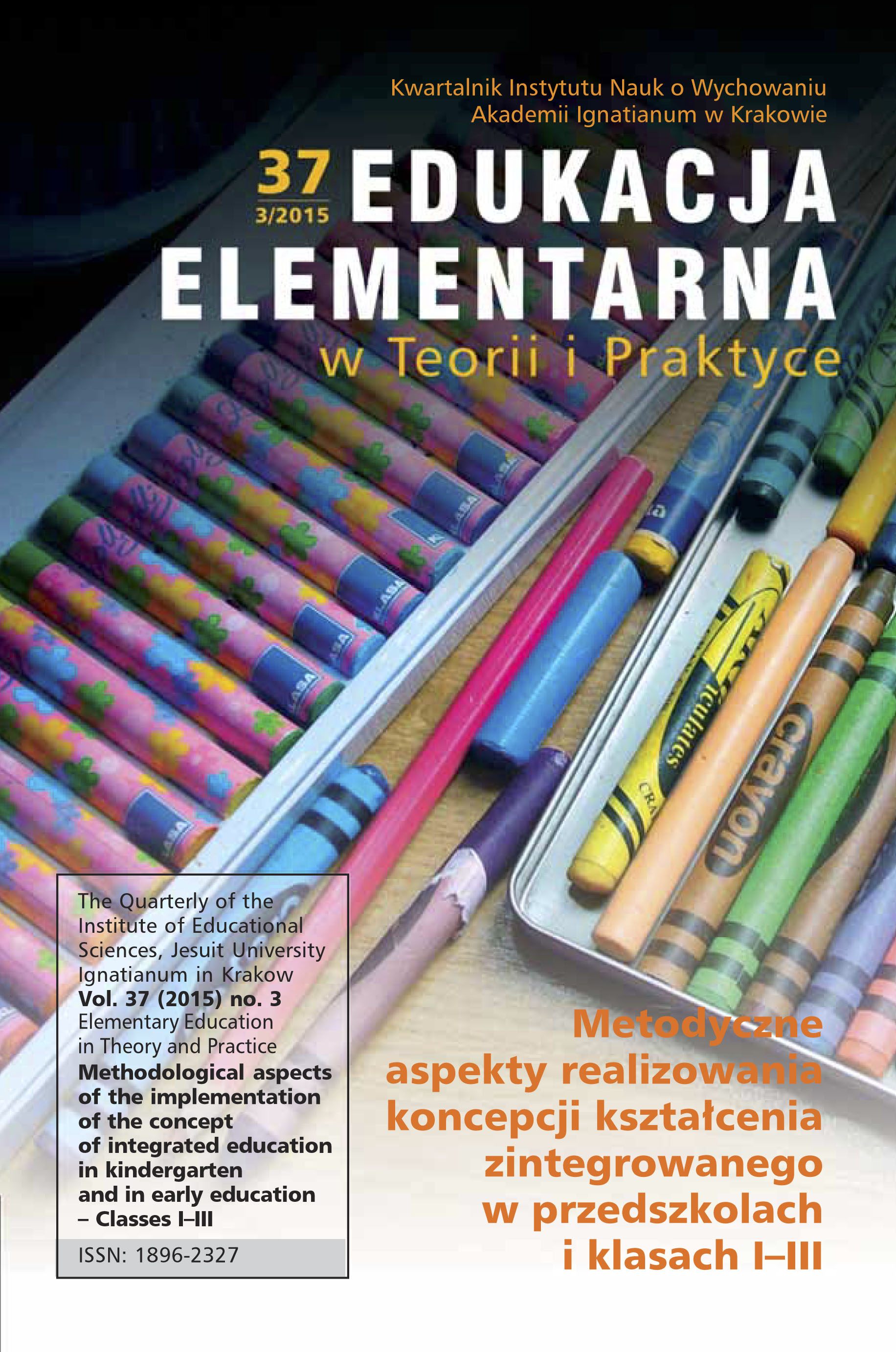Edukacja wczesnoszkolna wokół problemów i nowych rozwiązań
Early Childhood Education Upon Problems and New Solutions
Author(s): Agata TataraSubject(s): Social Sciences, Education
Published by: Uniwersytet Ignatianum w Krakowie
Keywords: primary education; integrated education; recommended conditions for and ways of implementing the basic curriculum; neurodidactics; combined classes; teacher-training
Summary/Abstract: The idea of an integrated education has a rich tradition in the history of educational thought, especially in the form of the conception of alternative schools dating from the early 20th century (O. Decroly, C. Freinet, M. Montessori). In Poland, it has been implemented for Classes I to III in line with the educational reforms of 1999. The search for the best solutions with regard to both choice of method and organizational issues has engendered a discussion about the right model for the educational system as it pertains to children. Currently, methodological aspects of working with children reflect an orientation towards constructivist ideas about teaching, with great emphasis placed on the fact that the conditions under which learning occurs are to a large extent influenced by the people directly involved: namely students, teachers and parents. Constructivists, who view learning as a process of individually building one’s own knowledge, point to the role of the individual learner. This article stresses a conception found in current neuro-didactics: that of teaching and learning in ways suited to how the brain itself works. School teaching is still currently seen as a conveyor belt, where one side is the active sender and the other a passive recipient. In the Polish school system, alongside schools with a full organizational structure, in which the educational process is being implemented in classes that are homogeneous with respect to age, we find schools that are functioning with an incomplete organizational structure, where teaching that aims to meet the demands of the educational system has to be realized through combining classes. The last part of the article concerns the training of teachers. The selection of teachers to work with children is, after all, the primary foundation on which the further functioning of the child in school depends.
Journal: Edukacja Elementarna w Teorii i Praktyce
- Issue Year: 10/2015
- Issue No: 3 (37)
- Page Range: 11-28
- Page Count: 17
- Language: Polish

